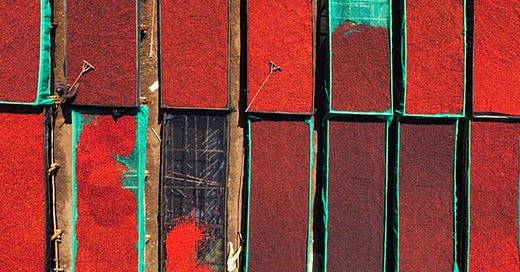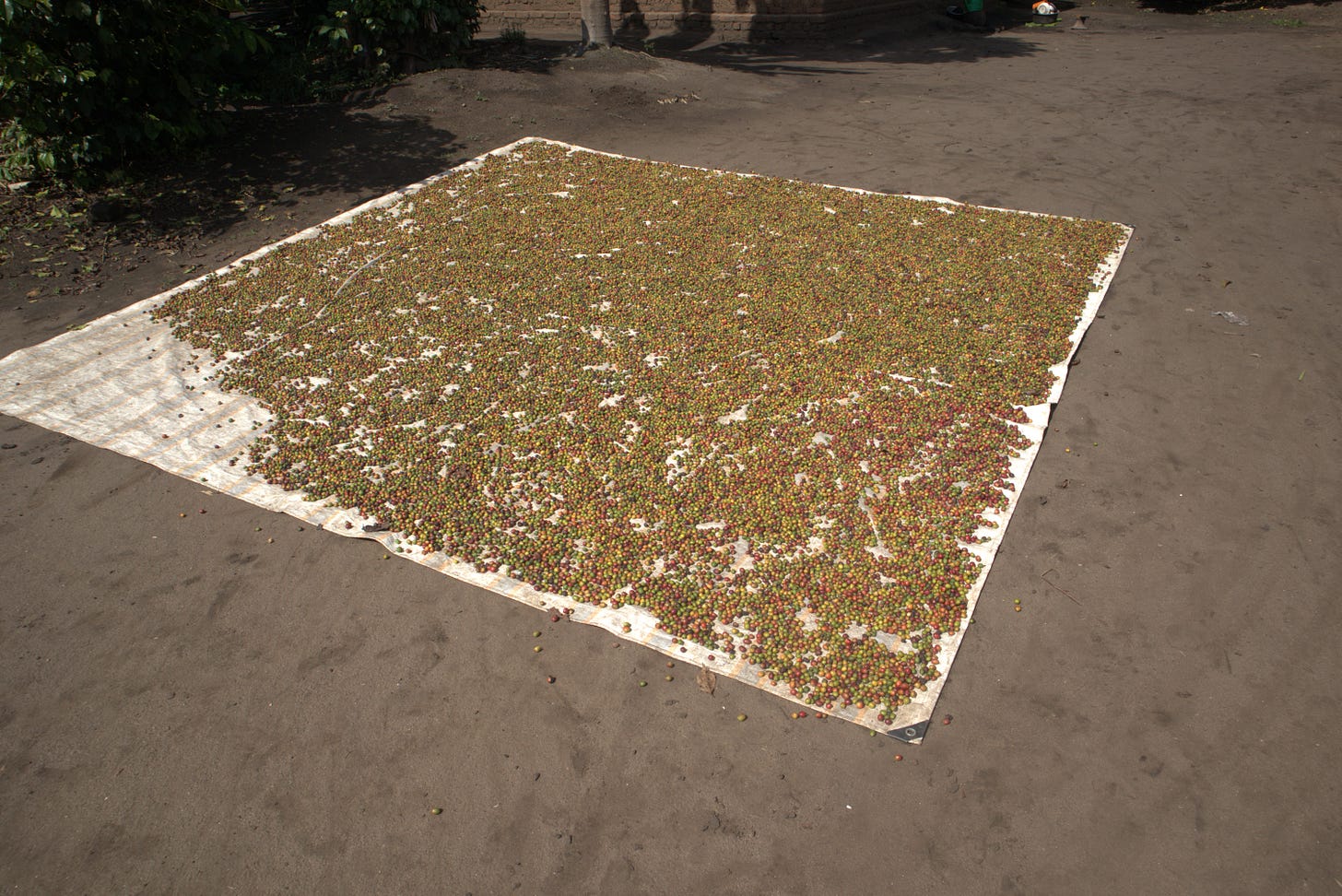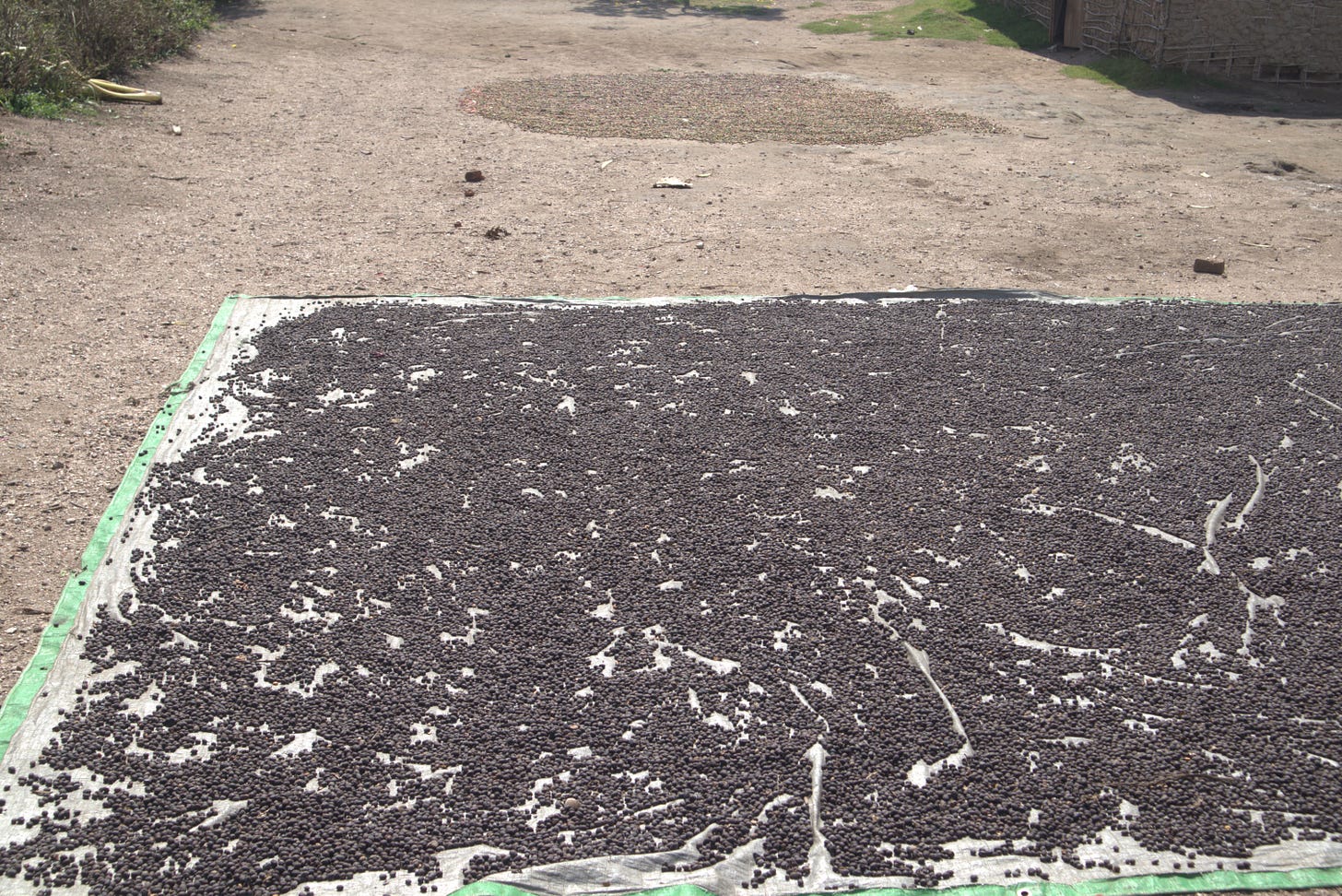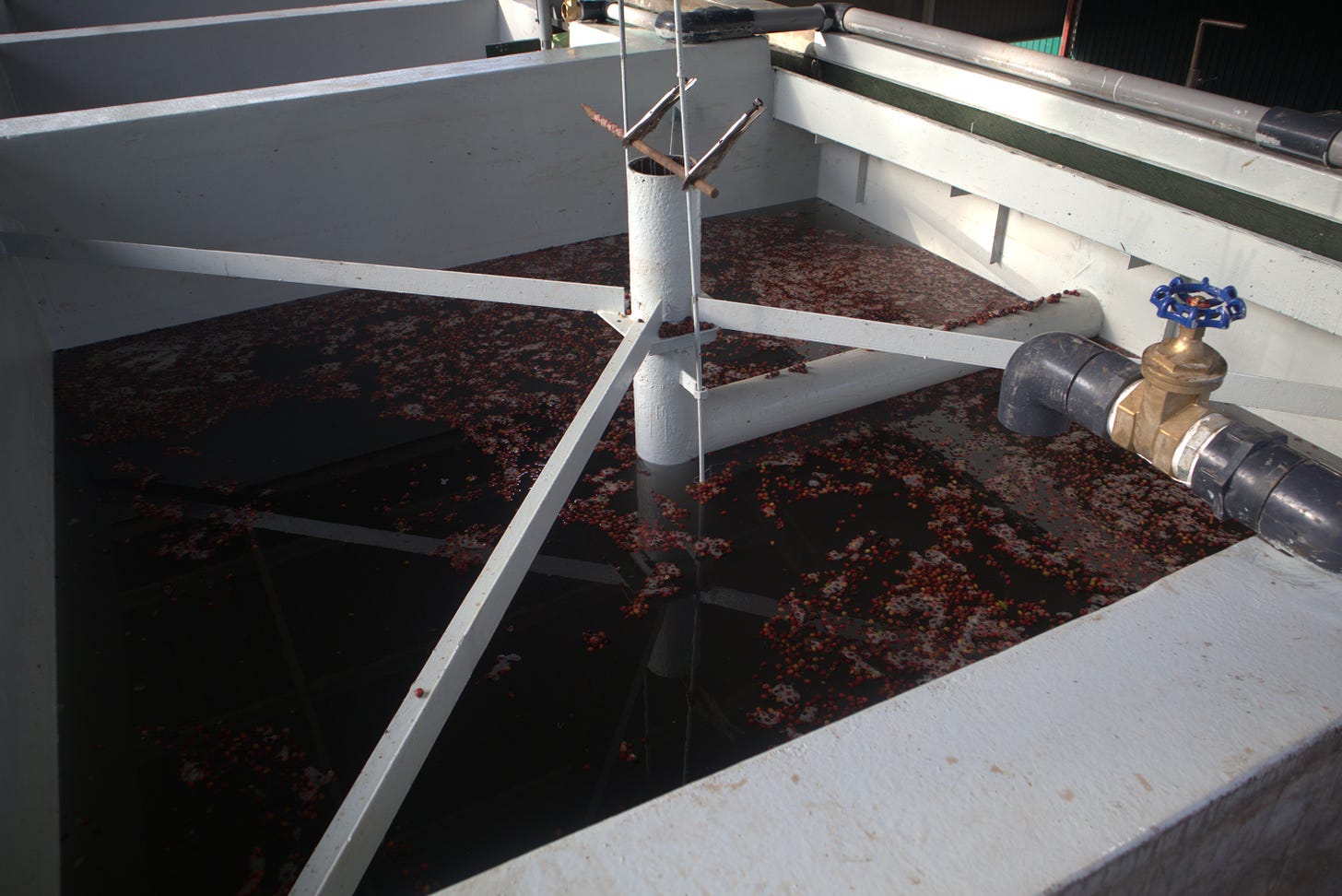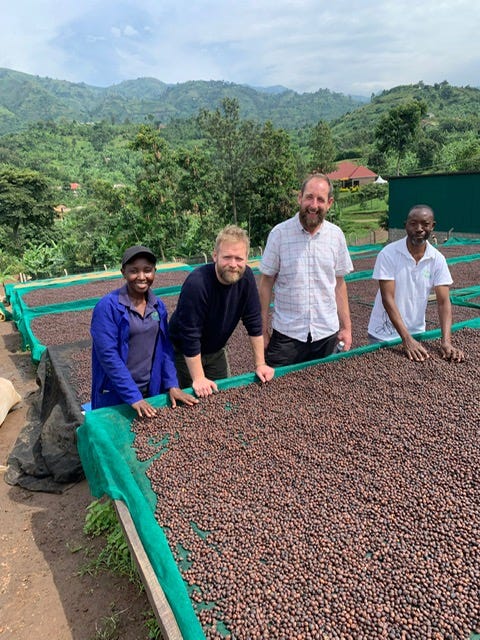I remember with great affection the day my obsession with coffee started. I was invited to taste some coffee with a few friends, who had just started a coffee roasting company out of a barn in North Yorkshire. I wasn’t doing anything exciting at that particular time in my life and coffee tasting sounded like a reasonable excuse to get out of the house for an hour.
My exposure to coffee was pretty limited at the time, and little did I know, this evening would be the start of a 10-year obsession with the intricate world of coffee.
Raised beds full of fresh cherry at Nyabirongo coffee station, Kasese, Western Uganda.
What does this have to do with Natural coffee?
I remember having a feeling that something special was taking place that night. As we huddled around the old cable spool slurping and gesticulating because none of us knew how to communicate verbally what we were tasting, my spoon wandered into a cup, made its way to my lips, and boom, an explosion of flavour went off in my mouth. The next few moments were spent dipping that spoon back and forth from cup to mouth, almost in disbelief at what I was tasting. This wasn’t coffee, this was something else, this was fruity, sweet, sticky and complex with layers of flavour that I didn’t understand. This was my first interaction with a natural coffee.
That coffee was from Ethiopia and it was wild. As I left the barn that evening I made a promise to myself, I had to find out why this coffee tasted like this.
Natural coffees have become synonymous with the specialty coffee movement, admired for their heady aromatics and complex flavour profiles they have become a staple on every specialty coffee roaster’s offer list, however, this hasn’t always been the case.
Natural coffees have been the traditional method used for liberating the seed from the fruit for centuries and this is still the preferred process for many coffee-growing countries where access to water and adequate processing infrastructure is limited. Processing natural coffee although deemed to be the simplest way to get to the prized seed can lead to a large number of defective beans if the coffee is not screened carefully prior to the drying stage. This can be due to poor cherry-picking practices (picking under-ripe and over-ripe cherries) and the chance of undetected seed damage caused by insect attacks. This will have an impact on the end cup quality and is one of the many reasons that naturally processed coffees have been previously perceived as being of inferior quality.
An example of coffee cherries drying on a tarpaulin in Uganda. Note the array of colours present in this picture. Although this looks visually pleasing the green and yellow cherries are very young and have not reached peak maturity.
An example of cherries that have almost finished the drying phase. Note how they have all become the same colour, making this very difficult to distinguish what cherries were under or overripe.
This has dramatically changed over the last 20 years and with the rise in demand for quality coffee, we have seen a large percentage of the coffee-growing world apply their efforts towards the production of this more traditional method. The movement into producing coffees that offer differentiation in flavour profile and the demand from specialty roasters has prompted progressive producers and exporters to concentrate their efforts on this method and invest in technology, screening machinery and the development of strict protocols that detect the majority of seeds that could potentially have a negative impact on the end cup.
Floating tank, one of the main ways natural coffee is screened to remove underripe coffee cherries. Immature beans are less dense and will float allowing them to be removed.
The Natural process works by evenly distributing the mature coffee cherries onto patios or drying beds in the sun for an extended period of time after harvesting. The cherries will then be allowed to dry naturally and will be turned at a frequency that will allow the cherries to dry evenly, limiting the potential for unwanted bacteria to build up. This allows the flesh of the cherry to decompose around the seed leaving the native yeast and bacteria present in the environment to get to work creating a more complex flavour profile. If this is done In a controlled manner the flesh will break down and as the moisture content reduces a concentrated amount of sugars from the flesh will bind to lower levels of moisture left in the seed. This will produce a range of flavour enhancements which can dramatically increase the potential cup score of the coffee and its overall value.
The amazing smell of natural coffee drying on the raised beds at the Nyabirongo coffee station in Uganda.
As I spend more time thinking about what the future of specialty coffee looks like and reflecting on my own journey, I am constantly reminded of the things I now take for granted, and with the influx of a different fermentation process popping up almost weekly, I struggle to filter through the jargon, some of which I do not understand. What I do know is, I have cupped and tasted many natural coffees that I have stopped appreciating the immense amount of work that goes into producing the good ones. Although not my preferred cup of choice, I very much understand the reasons why this way of processing can add value for the producer. It is remarkable how far the industry has come and more often than not the natural coffees I receive as samples every week seem to get better and better. Even from the coffee-growing countries that you would not associate with this style of coffee.
Long may this continue…
Burts…


